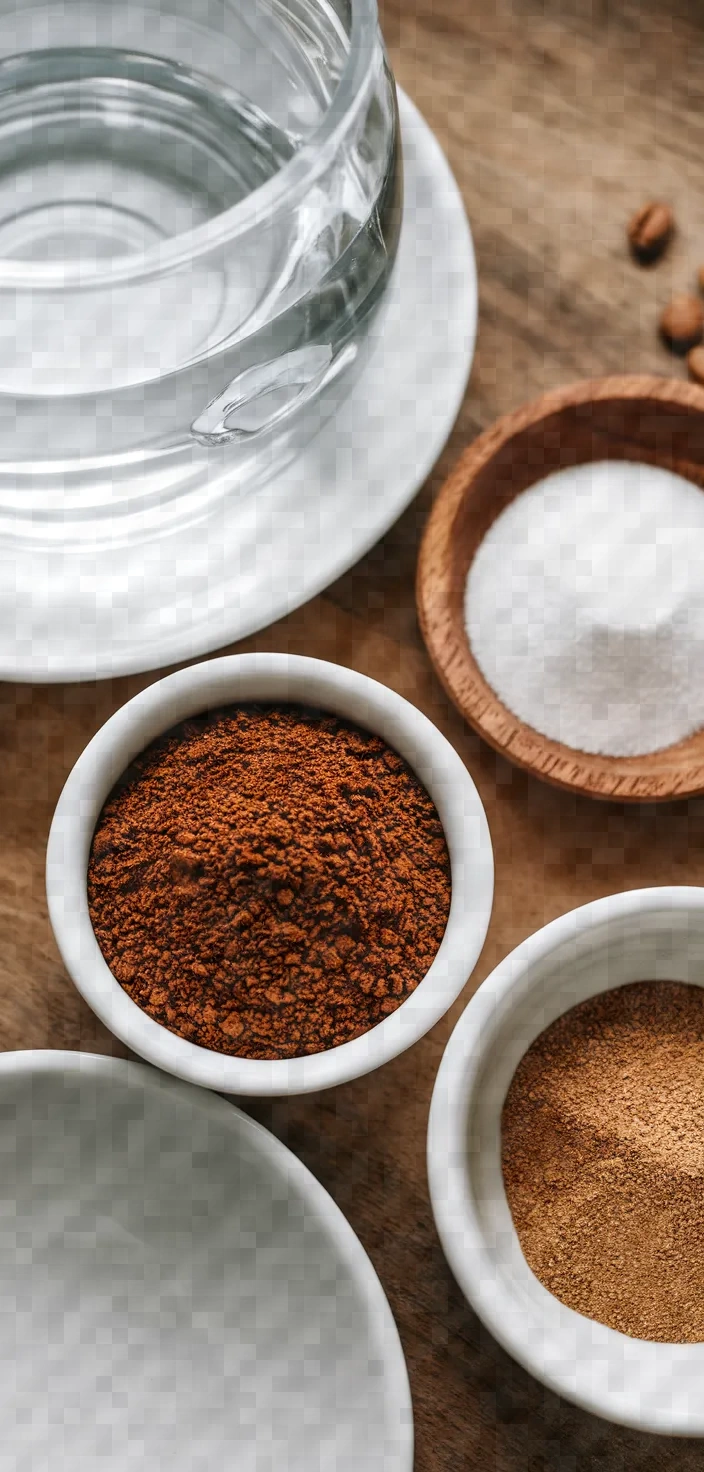Picture this: the afternoon sun is pouring through your kitchen window as you embrace the art of crafting a perfect cup of Greek coffee. It’s not just about the caffeine kick—it’s the ritual, the sensory journey from cold water to that divine, frothy “kaimaki.” Grab your briki, and let’s dive into a moment of pure, espresso-infused zen.

I adore beginning my day with a coffee in the Greek way, a delicious blend of very finely ground coffee and cold water, that is brewed to just shy of a vigorous boil and to a texture somewhere between that of espresso and Turkish coffee. Often I adjust the sweetness by adding a teaspoon or so of sugar, though I sometimes enjoy it straight and very strong.
Rich in antioxidants and full of flavor, this coffee will put some pep in your step and some zing in your morning.
Greek Coffee Recipe Ingredients

- Cold Water: Hydration, a base for all ingredients, essential for brewing.
- Finely Ground Greek Coffee: Rich in antioxidants, provides robust flavor, key caffeine source.
- Sugar: Carbohydrates source, optional sweetener, balances coffee’s bitterness.
Greek Coffee Recipe Ingredient Quantities
“`html
- 1 cup of cold water
- 1 tablespoon of finely ground Greek coffee
- 1 teaspoon of sugar (optional, to taste)
“`
How to Make this Greek Coffee Recipe
1. Fill a briki or small saucepan with 1 cup of fresh, cold water.
2. In order to prepare, combine the following ingredients: 1 tablespoon of finely ground Greek coffee; 100 milliliters of water.
3. Should you wish, add 1 teaspoon of sugar, to taste. Stir the mixture well to combine the components.
4. Set a briki or saucepan on medium heat.
5. As the coffee heats, stir gently until the sugar dissolves, then cease stirring.
6. Observe the coffee intently as it starts to warm and develop a bubbly foam known as “kaimaki” that forms on top.
7. When the coffee begins to froth and bubble, right before it reaches a full boil, take it off the heat.
8. Permit the foam to settle for a few moments.
9. Pour the coffee into a small demitasse cup, doing so slowly and evenly, and keep the foam intact.
10. Serve the Greek coffee without delay, and take pleasure in the experience.
Greek Coffee Recipe Equipment Needed
1. Briki or small saucepan
2. Measuring cup
3. Measuring spoons
4. Spoon for stirring
5. Small demitasse cup
FAQ
- What type of coffee is used for Greek coffee?Finely milled Greek coffee is used to prepare the drink known as Greek coffee. The grounds are similar to those of Turkish coffee, but there are distinct differences in the processing and roasting that yield a specific flavor to Greek coffee.
- Can I use hot water instead of cold water?No, beginning with hot or boiling water may produce undesirable results, as the coffee should be heated slowly to ensure the formation of a thick foam.
- Is it necessary to add sugar to Greek coffee?No, it is not necessary to add sugar, and you can adjust the amount to your taste. If you want it muggle, you can enjoy it that way.
- How do you achieve the perfect crema on Greek coffee?The coffee mixture is heated slowly and steadily over medium heat and brought almost to the boiling point, to form a rich crema.
- Can I use a regular coffee pot to make Greek coffee?No, it is better to use a briki, a particular small pot made for the preparation of Greek coffee.
- How long should I heat the coffee for?Warm up the coffee until it starts to climb and froth, then take it off the heat before it boils over.
- How do I serve Greek coffee?Present Greek coffee in a tiny mug, about the size of an espresso mug, and let the grounds calm down before you slurp. They say not to drink it when the grounds are still swimming around, and I would have to agree that it gives a more pleasing coffee experience to let it be still for a short moment.
Greek Coffee Recipe Substitutions and Variations
1 cup water, cold
1 cup of cold filtered water
One cup of bottled spring water.
1 tablespoon of finely ground Greek coffee
1 tablespoon of very finely ground Turkish coffee
1 tablespoon of espresso, finely ground
1 teaspoon sugar (optional, to taste)
1 tsp of honey
One teaspoon of stevia.
Pro Tips
1. Use the right coffee grind: For authentic Greek coffee, make sure to use finely ground coffee, similar to the texture of powdered sugar. This helps achieve the desired consistency and flavor.
2. Pay attention to the kaimaki: The frothy foam (“kaimaki”) is a signature feature of Greek coffee. Once the coffee begins to froth, avoid overstirring and heat carefully to maintain a thick, lasting foam.
3. Control the heat: Heat the briki slowly over medium or medium-low heat. This allows the flavors to develop fully and gives you better control over the frothing process, ensuring the coffee doesn’t boil over.
4. Customize sweetness: If you prefer your coffee sweeter, experiment with adding sugar at different stages. You might try incorporating it right at the beginning with the coffee and water, or sprinkle a touch on top after brewing for a different flavor profile.
5. Serve immediately: Greek coffee is best enjoyed fresh and hot. Serve it as soon as it’s ready to preserve the flavor and ensure the foam is still intact when you serve it.

Greek Coffee Recipe
My favorite Greek Coffee Recipe
Equipment Needed:
1. Briki or small saucepan
2. Measuring cup
3. Measuring spoons
4. Spoon for stirring
5. Small demitasse cup
Ingredients:
“`html
- 1 cup of cold water
- 1 tablespoon of finely ground Greek coffee
- 1 teaspoon of sugar (optional, to taste)
“`
Instructions:
1. Fill a briki or small saucepan with 1 cup of fresh, cold water.
2. In order to prepare, combine the following ingredients: 1 tablespoon of finely ground Greek coffee; 100 milliliters of water.
3. Should you wish, add 1 teaspoon of sugar, to taste. Stir the mixture well to combine the components.
4. Set a briki or saucepan on medium heat.
5. As the coffee heats, stir gently until the sugar dissolves, then cease stirring.
6. Observe the coffee intently as it starts to warm and develop a bubbly foam known as “kaimaki” that forms on top.
7. When the coffee begins to froth and bubble, right before it reaches a full boil, take it off the heat.
8. Permit the foam to settle for a few moments.
9. Pour the coffee into a small demitasse cup, doing so slowly and evenly, and keep the foam intact.
10. Serve the Greek coffee without delay, and take pleasure in the experience.

















